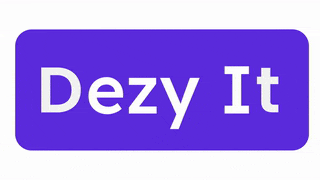Global Leaders in AI for Healthcare Administration: What Other Countries Can Learn
- purvasha
- Nov 20, 2024
- 3 min read
Artificial intelligence (AI) is transforming healthcare administration worldwide, streamlining operations, reducing costs, and enhancing patient care. Some nations have emerged as global leaders in adopting AI for healthcare administration, setting benchmarks for others to follow. In this blog, we’ll explore which countries are excelling in AI integration, the innovative tools they’ve implemented, and what other nations can learn from their success stories.

1. The United States: Pioneering Predictive Analytics and Workflow Automation
The United States is a trailblazer in leveraging AI for healthcare administration, with widespread adoption in clinics and hospitals. AI tools like predictive analytics and workflow automation systems are commonly used to optimize resource allocation, streamline appointment scheduling, and improve revenue cycle management.
Key Tools: AI-powered billing systems, virtual assistants for patient scheduling, and predictive demand forecasting.
Takeaway for Other Countries: Invest in predictive analytics to enhance operational efficiency and reduce waste in healthcare systems.
2. The United Kingdom: Enhancing Efficiency in Public Healthcare
The UK’s National Health Service (NHS) has embraced AI to address administrative inefficiencies and reduce wait times. AI-powered chatbots assist patients in booking appointments, while advanced algorithms analyze patient data to optimize service delivery.
Key Tools: AI chatbots, automated referral management systems, and patient flow analytics.
Takeaway for Other Countries: Focus on integrating AI with public healthcare systems to improve accessibility and resource utilization.
3. Singapore: A Tech-Driven Approach to Healthcare Administration
Singapore has become a global leader in AI adoption due to its robust healthcare infrastructure and focus on innovation. The country uses AI for automated appointment systems, real-time patient monitoring, and data security solutions to safeguard sensitive medical records.
Key Tools: Smart scheduling systems, AI-based patient portals, and cybersecurity-enhanced EHR platforms.
Takeaway for Other Countries: Combine AI tools with stringent data security measures to ensure compliance and trust in healthcare technology.
4. Germany: Automating Administrative Workflows
Germany has adopted AI to minimize administrative burdens in its healthcare system. Hospitals and clinics use AI to handle repetitive tasks like billing, patient intake, and inventory management, freeing up staff to focus on patient care.
Key Tools: AI-driven invoice processing, automated patient registration, and predictive supply chain management.
Takeaway for Other Countries: Implement AI to automate time-intensive administrative tasks and improve staff productivity.
5. Japan: AI in Population Health Management
Japan leverages AI to address challenges associated with its aging population. AI tools analyze population health trends, predict healthcare demands, and manage chronic disease care plans effectively.
Key Tools: AI analytics for population health, virtual assistants for elderly care, and wearable health devices.
Takeaway for Other Countries: Use AI to tackle unique demographic challenges, such as aging populations or rising chronic disease cases.
6. Canada: Improving Patient Engagement with AI
Canada focuses on AI-powered tools to enhance patient engagement and communication. Hospitals and clinics use conversational AI for appointment reminders, follow-ups, and virtual health consultations, improving patient satisfaction and retention.
Key Tools: AI chatbots, virtual care platforms, and automated patient outreach systems.
Takeaway for Other Countries: Prioritize patient engagement tools to build loyalty and ensure better healthcare outcomes.
7. The United Arab Emirates: AI for Smart Hospital Management
The UAE has implemented AI for smart hospital management, optimizing resource allocation and reducing wait times. Tools like AI-powered triage systems and automated bed management are widely used.
Key Tools: AI triage assistants, resource optimization platforms, and automated discharge planning systems.
Takeaway for Other Countries: Focus on AI to enhance resource utilization and minimize patient bottlenecks in hospitals.
Lessons for Other Nations
Start Small and Scale Gradually: Begin with AI in manageable areas like appointment scheduling or billing, then expand to more complex applications like predictive analytics.
Invest in Training and Adoption: Ensure healthcare staff are trained to use AI tools effectively to maximize their potential.
Focus on Interoperability: Choose AI systems that integrate seamlessly with existing healthcare infrastructure like EHRs.
Address Data Security: Implement robust cybersecurity measures to protect sensitive patient information and comply with regulations.
Leverage Local Strengths: Adapt AI tools to address specific challenges, such as rural healthcare access or aging populations.
Conclusion
Countries like the United States, the United Kingdom, and Singapore are leading the charge in adopting AI for healthcare administration. By automating workflows, enhancing patient engagement, and ensuring resource optimization, these nations are setting examples for others to follow. The key takeaway? With the right strategies, any country can harness AI to revolutionize healthcare administration and deliver better care to patients.

